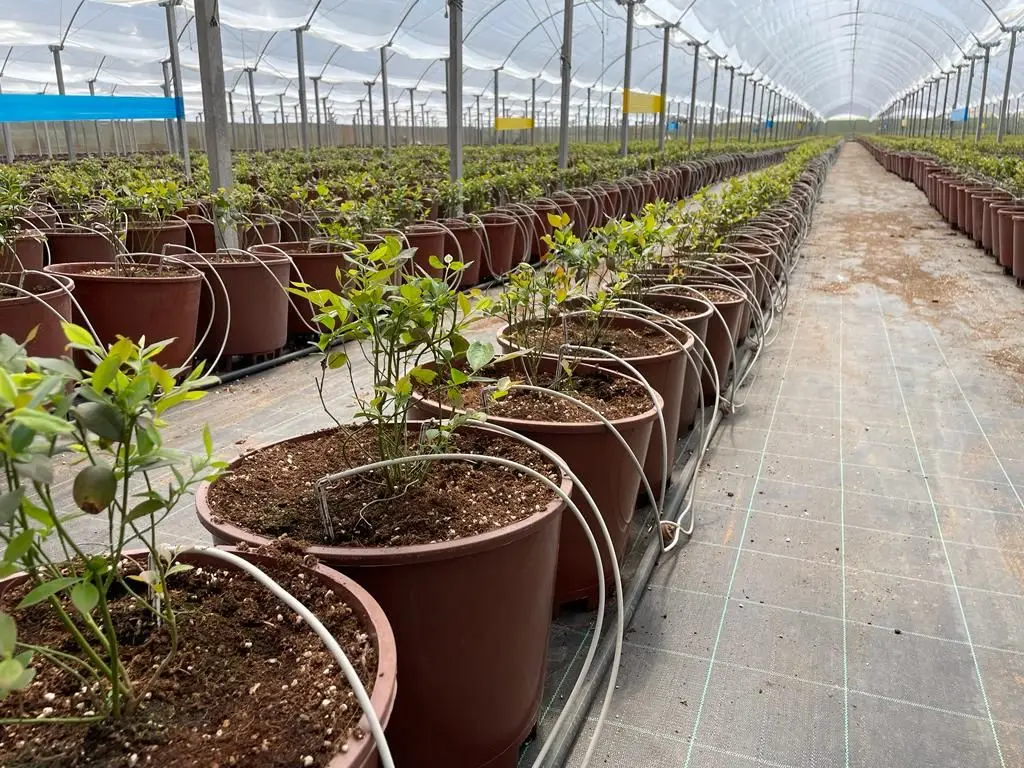Table of content

Effective Control Measures for Blueberry Pests and Diseases
Blueberries are highly valued for their delicious taste and nutritional benefits, but they are vulnerable to various pests and diseases that can significantly impact their growth and yield. Successful cultivation of blueberries requires diligent management and effective control measures to mitigate these challenges. In this article, we will explore the common pests and diseases affecting blueberries and discuss comprehensive strategies for their prevention and control.
Common Pests Affecting Blueberries
-
Blueberry Maggot (Rhagoletis mendax): The blueberry maggot is a serious pest that lays eggs in developing blueberries. The larvae feed inside the fruit, causing it to prematurely rot and drop from the plant. Effective control measures include:
- Monitoring and Trapping: Place yellow sticky traps baited with ammonium carbonate near blueberry bushes to capture adult flies. Regularly inspect traps to monitor fly activity.
- Sanitation: Remove and destroy infested berries promptly. This helps prevent the maggots from pupating in the soil and emerging as adults to continue the life cycle.
-
Spotted Wing Drosophila (Drosophila suzukii): Spotted wing drosophila is a fruit fly species that poses a significant threat to blueberry crops. Unlike other fruit flies, this species can lay eggs in ripening fruit, leading to larval infestation and fruit spoilage. Control strategies include:
- Early Harvest: Harvest blueberries as soon as they ripen to reduce the exposure of fruit to egg-laying flies.
- Netting: Cover blueberry bushes with fine-mesh netting during the fruiting season to physically exclude adult flies from laying eggs on the fruit.
-
Aphids (Various Species): Aphids are sap-sucking insects that can weaken blueberry plants and transmit viral diseases. To manage aphid infestations effectively, consider the following approaches:
- Biological Control: Introduce natural predators such as ladybugs, lacewings, or parasitic wasps that feed on aphids.
- Horticultural Oils and Insecticidal Soaps: Use these products to suffocate aphids and disrupt their life cycle. Apply them carefully to avoid harming beneficial insects.
Common Diseases Affecting Blueberries
-
Anthracnose (Colletotrichum gloeosporioides): Anthracnose is a fungal disease that causes dark lesions on blueberry leaves, stems, and fruit. Severe infections can lead to defoliation and reduced fruit quality. Management strategies include:
- Cultural Practices: Prune blueberry bushes to improve air circulation and remove infected plant parts during the dormant season.
- Fungicidal Treatments: Apply fungicides containing copper or sulfur before symptoms appear to protect new growth from infection.
-
Powdery Mildew (Microsphaera vaccinii-corymbosi): Powdery mildew appears as a white powdery growth on blueberry leaves, reducing photosynthesis and weakening the plant. Control measures include:
- Cultural Control: Maintain proper spacing between blueberry plants to improve air circulation and reduce humidity.
- Fungicidal Sprays: Apply fungicides containing sulfur or potassium bicarbonate at the first sign of powdery mildew to prevent its spread.
-
Mummy Berry (Monilinia vaccinii-corymbosi): Mummy berry is a fungal disease that causes berries to shrivel and become mummified. It can lead to significant crop losses if left unmanaged. Control methods include:
- Cultural Management: Remove and destroy mummified berries promptly to reduce the source of fungal spores.
- Fungicidal Applications: Apply fungicides during critical stages of berry development, such as bud break and flowering, to protect susceptible fruit from infection.
Integrated Pest Management (IPM) Approach
Integrated Pest Management (IPM) is a holistic approach to pest and disease management that integrates multiple strategies to minimize risks to human health and the environment. Key components of an IPM program for blueberries include:
- Monitoring and Identification: Regularly inspect blueberry plants for signs of pests and diseases. Early detection allows for timely intervention.
- Cultural Practices: Adopt practices that promote plant health, such as proper irrigation, fertilization, and pruning.
- Biological Controls: Use natural enemies, such as predatory insects or beneficial microorganisms, to suppress pest populations.
- Chemical Controls: Apply pesticides judiciously and according to label instructions as a last resort when other control methods are inadequate.
By implementing these comprehensive strategies for pest and disease management, blueberry growers can protect their crops effectively while minimizing the environmental impact of control measures. Vigilance, early intervention, and a proactive approach are essential for maintaining healthy and productive blueberry plants year after year.
Naturehydro Blueberry Grow Container
info@naturehydro.com
https://www.naturehydro.com